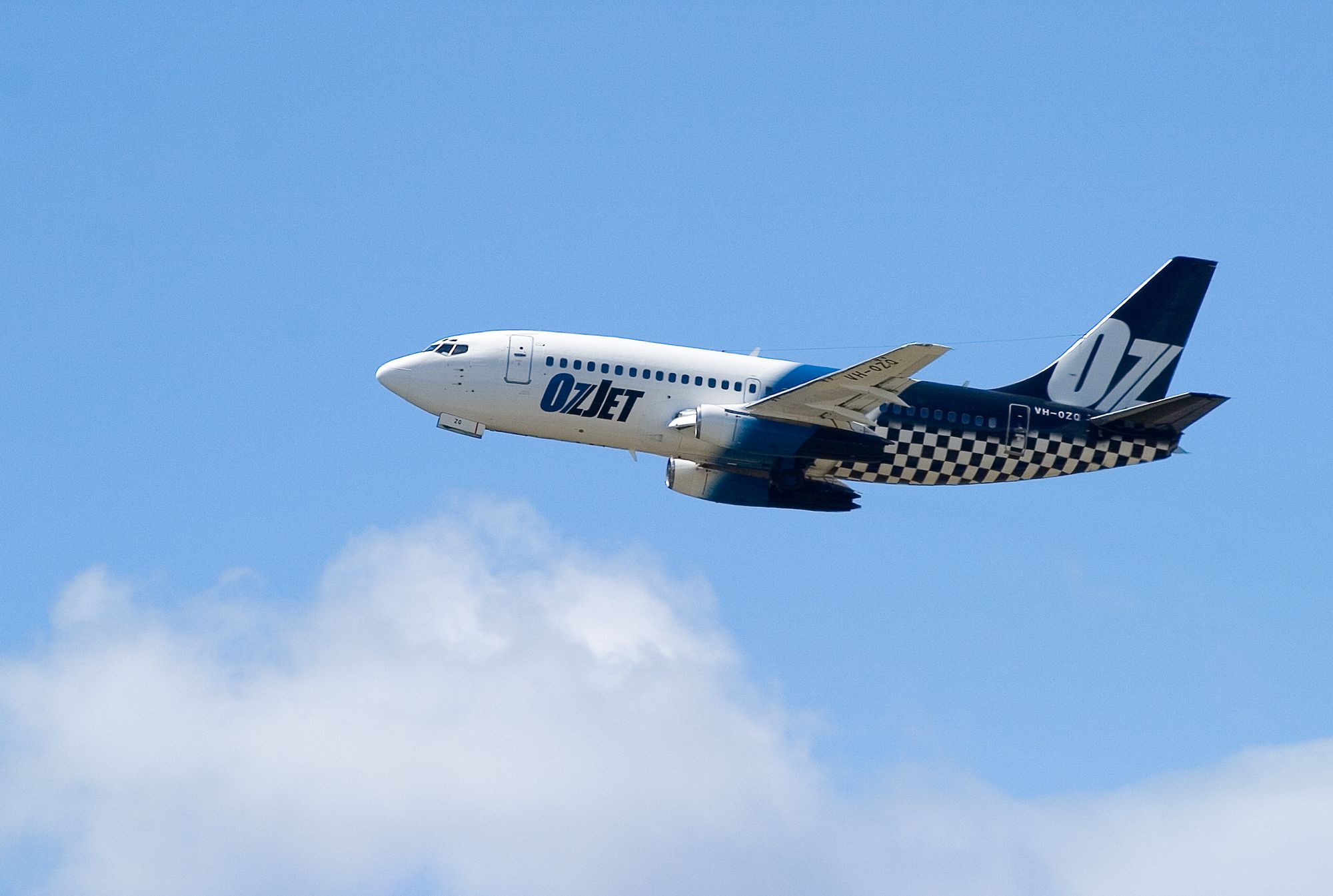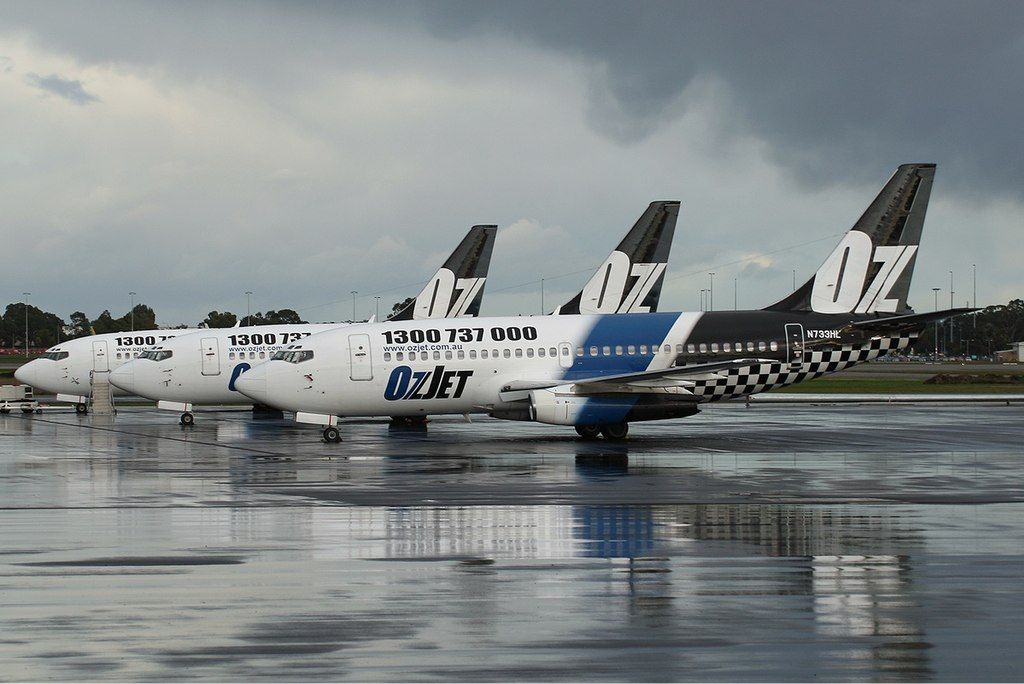On 29th December 2007, OzJet Flight 331 took off from Brisbane, Queensland, bound for Norfolk Island. The B737-229 had 97 passengers onboard, two flight crew, and three cabin crew. There were two positioning cabin crew in uniform also onboard.
Missed approach
At 03:52, the flight crew briefed the cabin crew that they might be unable to land at Norfolk Island due to bad weather. They circled over the ocean before the final approach, but visibility had deteriorated, and they performed a missed approach. Once the flaps were retracted, there was vibration throughout the aircraft. The constant buffering and uncommanded roll and yaw made the aircraft difficult to control. It had to be flown manually as the autopilot could not be engaged due to the vibration.
In the cabin
The cabin crew reported that the aircraft was shaking and vibrating as if flying through turbulence. The pilot in command (PIC) asked the cabin manager (CM) to check through the cabin windows to see if there was anything unusual.
A passenger reported a protruding slat on the right wing at an unusual angle. The CM took a photo of it with her mobile phone and reported this to the PIC.
Get the latest aviation news straight to your inbox: Sign up for our newsletters today!
In the flight deck
The flight crew concluded that with their fixed fuel reserve, and considering the drag from the slat, there might not be enough fuel to reach the alternate airport at Nouméa, New Caledonia. The PIC directed the co-pilot to radio a 'pan' call, identifying that there may be issues. There was no checklist for this situation. The flight crew cycled the flaps, the vibration reduced, and the aircraft became more controllable. The aircraft climbed to 24,000 feet.
Prepare for ditching
The PIC advised the cabin crew to prepare the cabin for a possible ditching. The three cabin crew and two positioning crew started to prepare the cabin for a landing on water. The CM duties were taken on by one of the positioning crew, who had more experience and had held senior training roles. The other positioning crew member helped in the cabin and was designated an able-bodied person (ABP) to help evacuate at the over-wing exit.
The new CM informed the PIC of the changes in roles. He advised that there was no time for a NITS briefing. This briefing informs the cabin crew of the emergency and the PIC's intentions. The cabin crew went to their stations, donned their life jackets, and pulled their quick reference handbooks (QRH) from the stowage. They disarmed and cross-checked the forward and rear exits and secured the lavatories and galleys.
Briefing the crew
The CM gathered the cabin crew in the forward galley to brief them about preparing the passengers and the cabin for ditching. The passenger who spotted the slat identified herself as a cabin crew who worked for another operator and offered her assistance; she became ABP at the opposite over-wing exit. They tried to look at their QRH for reference, but the books crumbled to the floor, so they decided to work from memory of emergency procedures.
Briefing the passengers
The cabin crew conducted an emergency briefing for the passengers, instructing them to remove jewelry and high-heeled shoes and to fit their life jackets. They were asked to ensure seatbelts were securely fastened before practicing the brace position. The cabin crew assisted the passengers with putting on life jackets and checked for passengers who wore them incorrectly or tied them the wrong way. They secured loose items in the cabin and handed out infant life jackets.
The CM briefed the passengers in row 1 as they were ABPs and told them how to operate the emergency exit door if she was incapacitated and the aircraft ditched. The ABPs at the back were not briefed. The flight crew advised the CM that they had about one hour before reaching Nouméa and that they should keep their life jackets on.
What happened next?
Shortly after, the PIC made an announcement to inform the passengers that he had regained control of the aircraft and that they were diverting to Nouméa. Just before descent, the PIC briefed the cabin manager that the landing may be harder and faster than usual. Life jackets were to be kept on, and the doors armed. The CM instructed the cabin crew to rearm the doors and brief the ABPs on operating the emergency exits and slides. The two CMs completed a final cabin secure check before sitting at the forward jump seats.
Two crew members were seated at the rear, along with one at the over-wing, along with the off-duty cabin crew who was assisting. They were unaware that the cabin secure check had been done and had not briefed the passengers about removing the life rafts and taking them to the over-wing exits.
However, the flight landed safely in Noumea without incident and without needing to ditch. There were no injuries as a result of the incident, although some passengers later reported psychological issues. One passenger had two seizures after disembarking. The crew deplaned to find their passengers without handling agents or assistance at the airport. The CM arranged for passengers to be taken to hotels.
Post-flight
The flight crew and two cabin crew were immediately flown back to Australia to operate a flight the following day at 04:00. It was on the aircraft to be sent to Noumea to collect the passengers. This decision was later revoked, and the crew were stood down. Due to operational requirements, they did not debrief the incident until six days later. The experienced CM informed the management team that all the crew should receive counseling.
We'd love to see you on Instagram - follow us here!
Conclusions
The pre-flight check of the QRH had not been conducted, so they didn't know it was unfit for use. The cabin crew reported that the passengers had difficulty finding the life jackets under the seat and in the armrest. Some wore the life jackets backward and tied incorrectly, so the cabin crew had to adjust them. The announcements could not be heard clearly in the rear of the cabin; the CM had to relay the information the PIC had announced at the descent.
The airline had no emergency response plan to deal with the situation, and the crew were scheduled to operate directly after the incident the next day with the same passengers. They were not asked if they were 'fit to fly' after the incident, and the debrief and counseling only occurred because the crew suggested it.
Of the passengers, 61% felt confident that they knew what to do if the aircraft ditched. 81% found the safety cards helpful in preparing for the ditching. Some passengers were alarmed seeing the crew in their life jackets briefing in the galley. However, the passengers generally described the cabin crew as calm, professional, and capable.





.jpg)